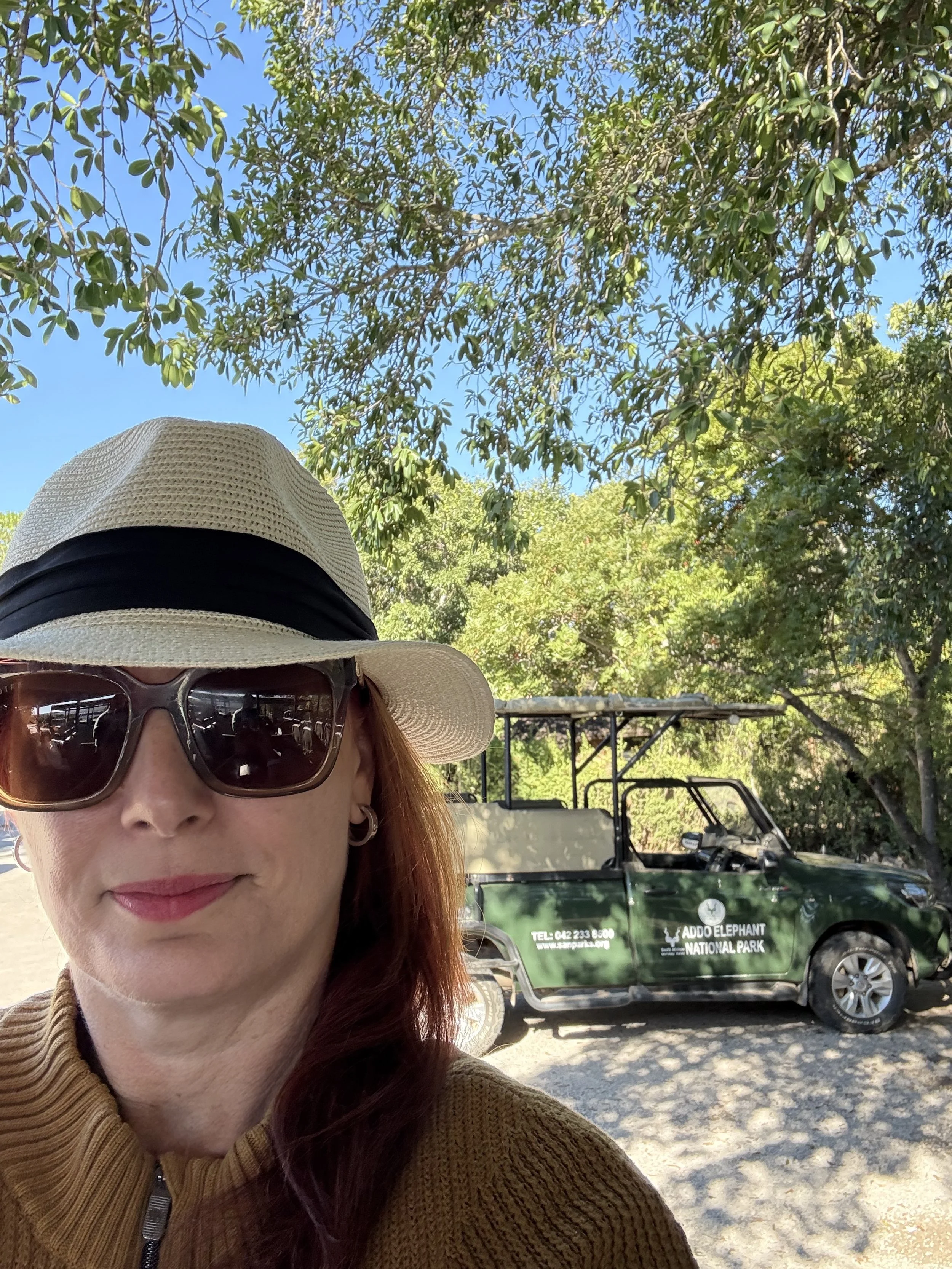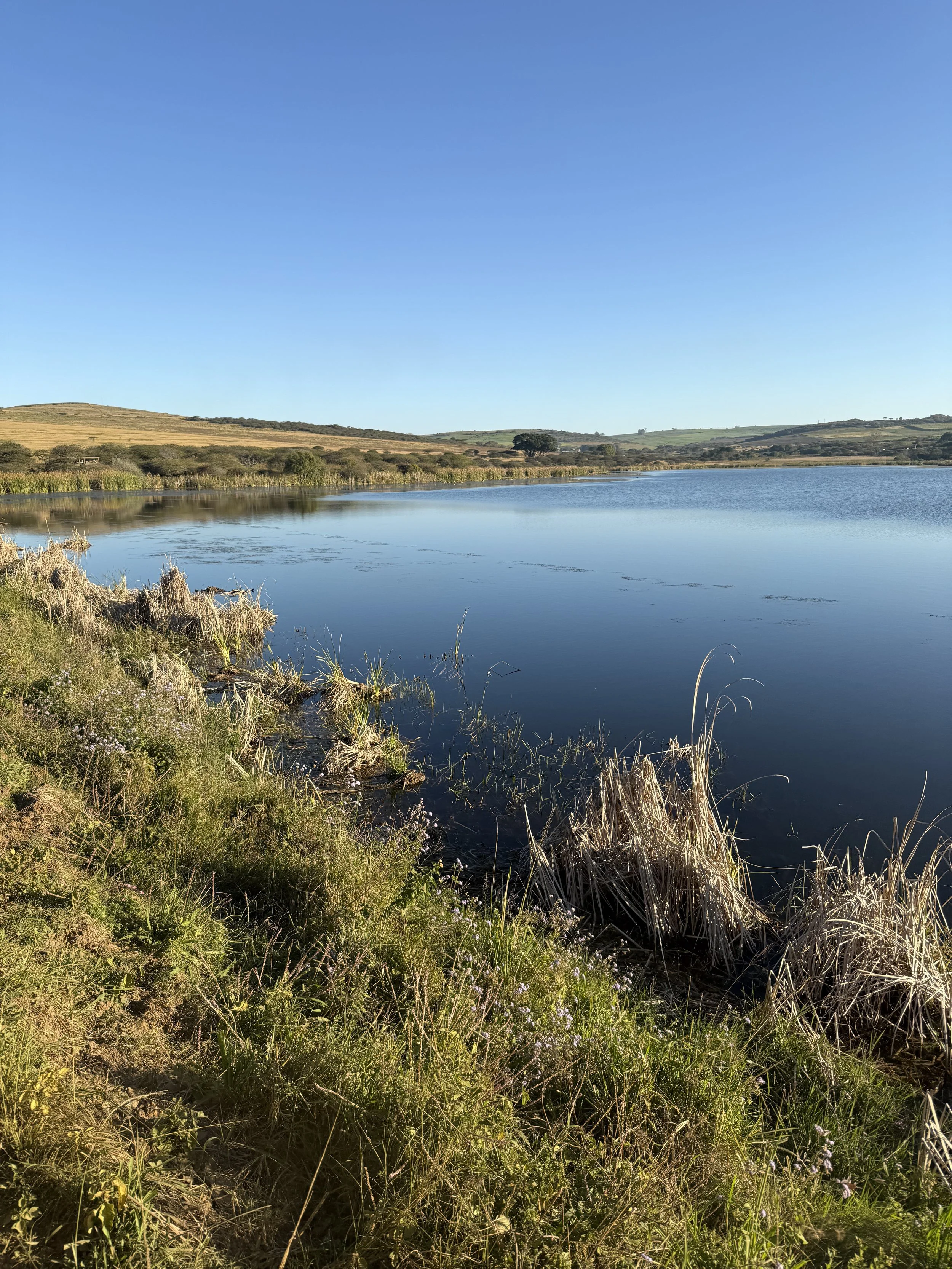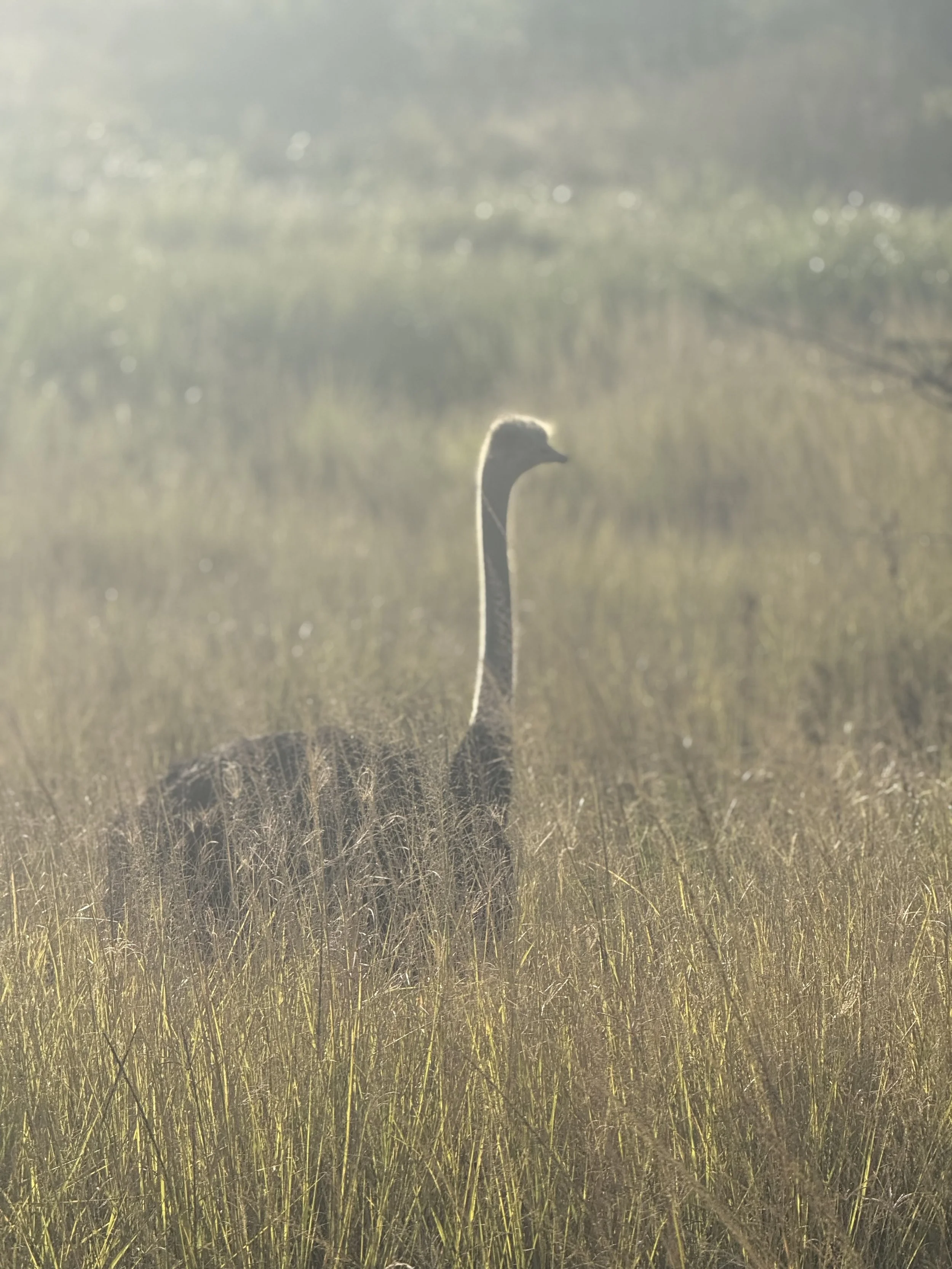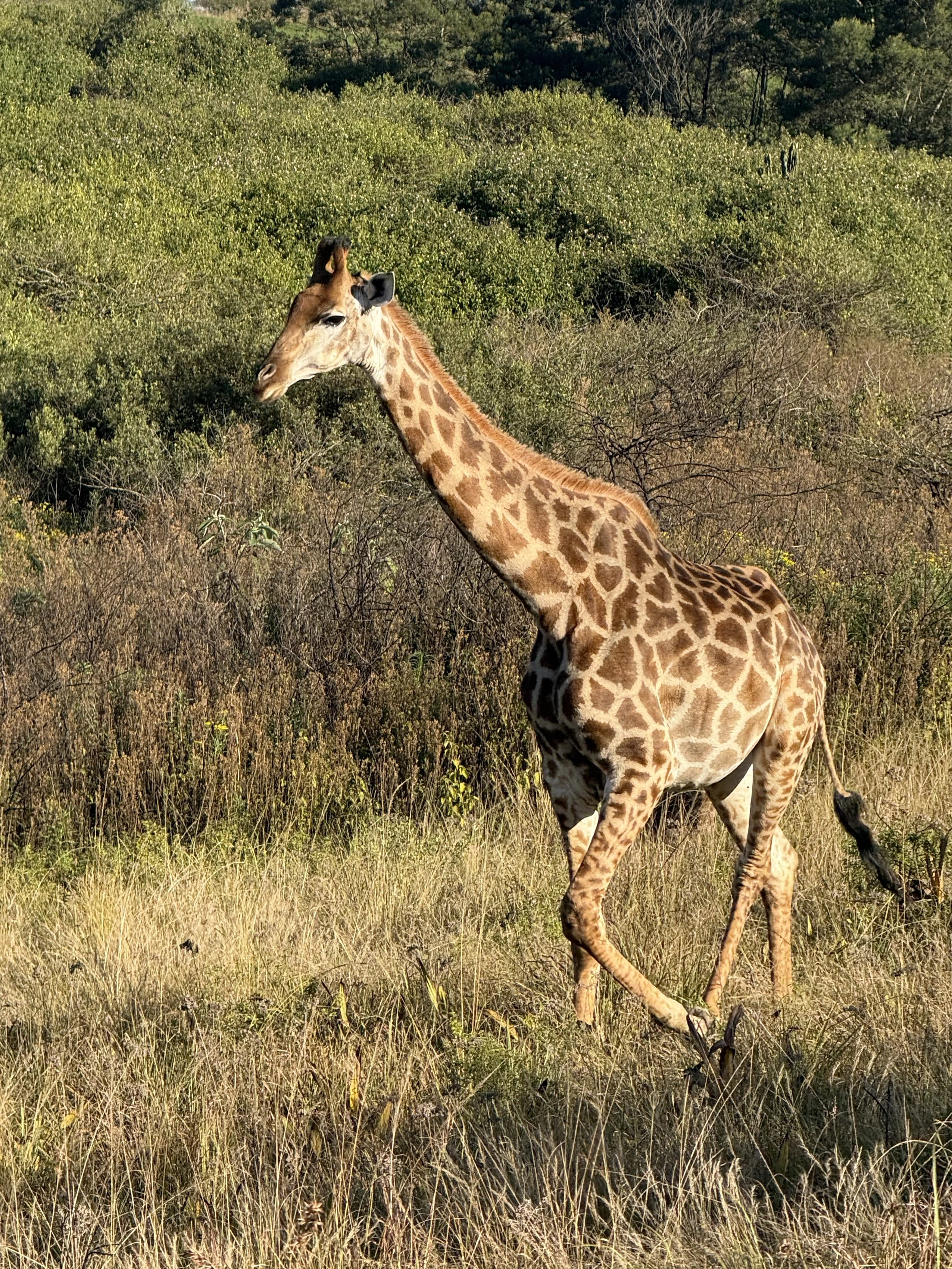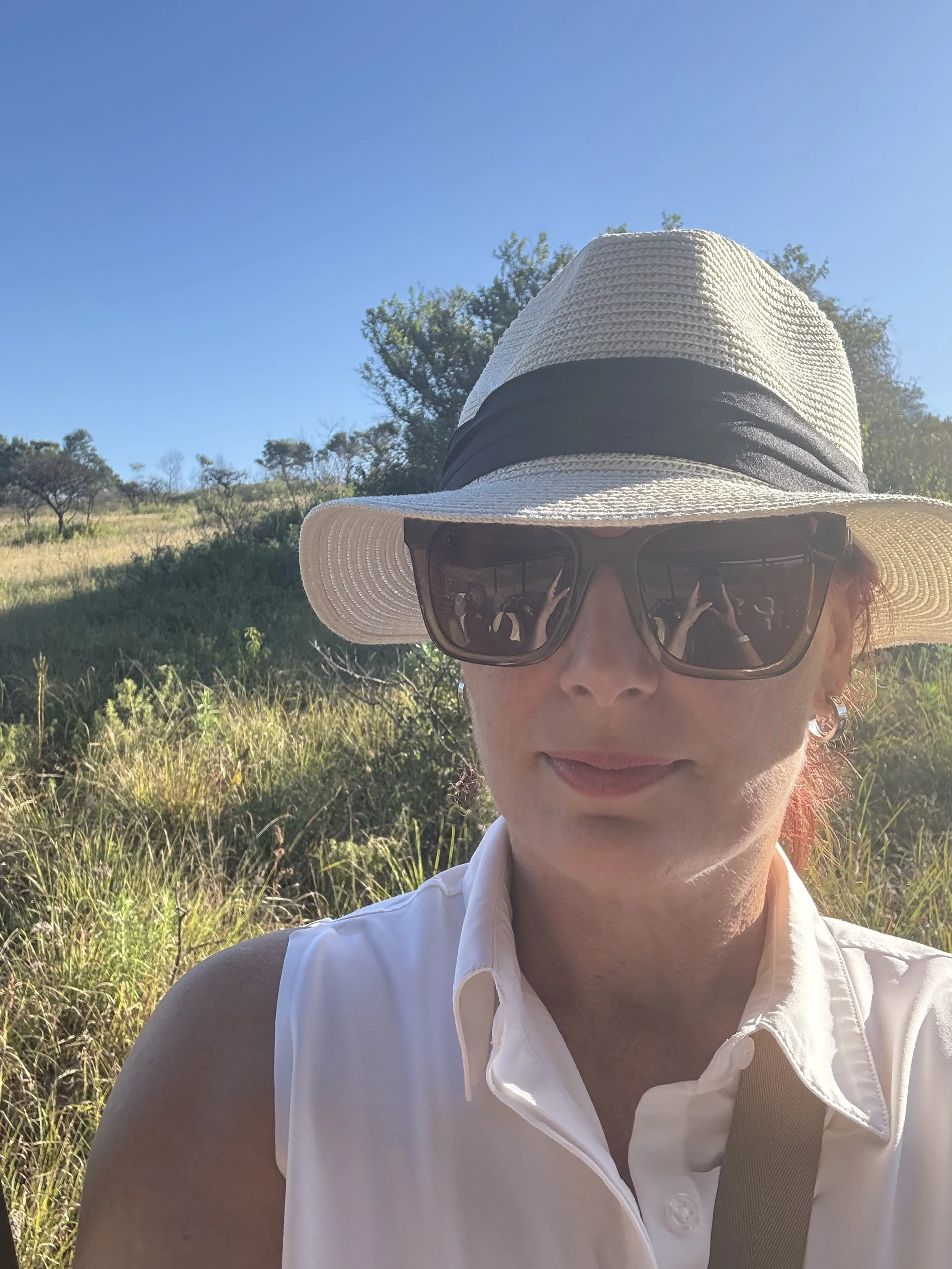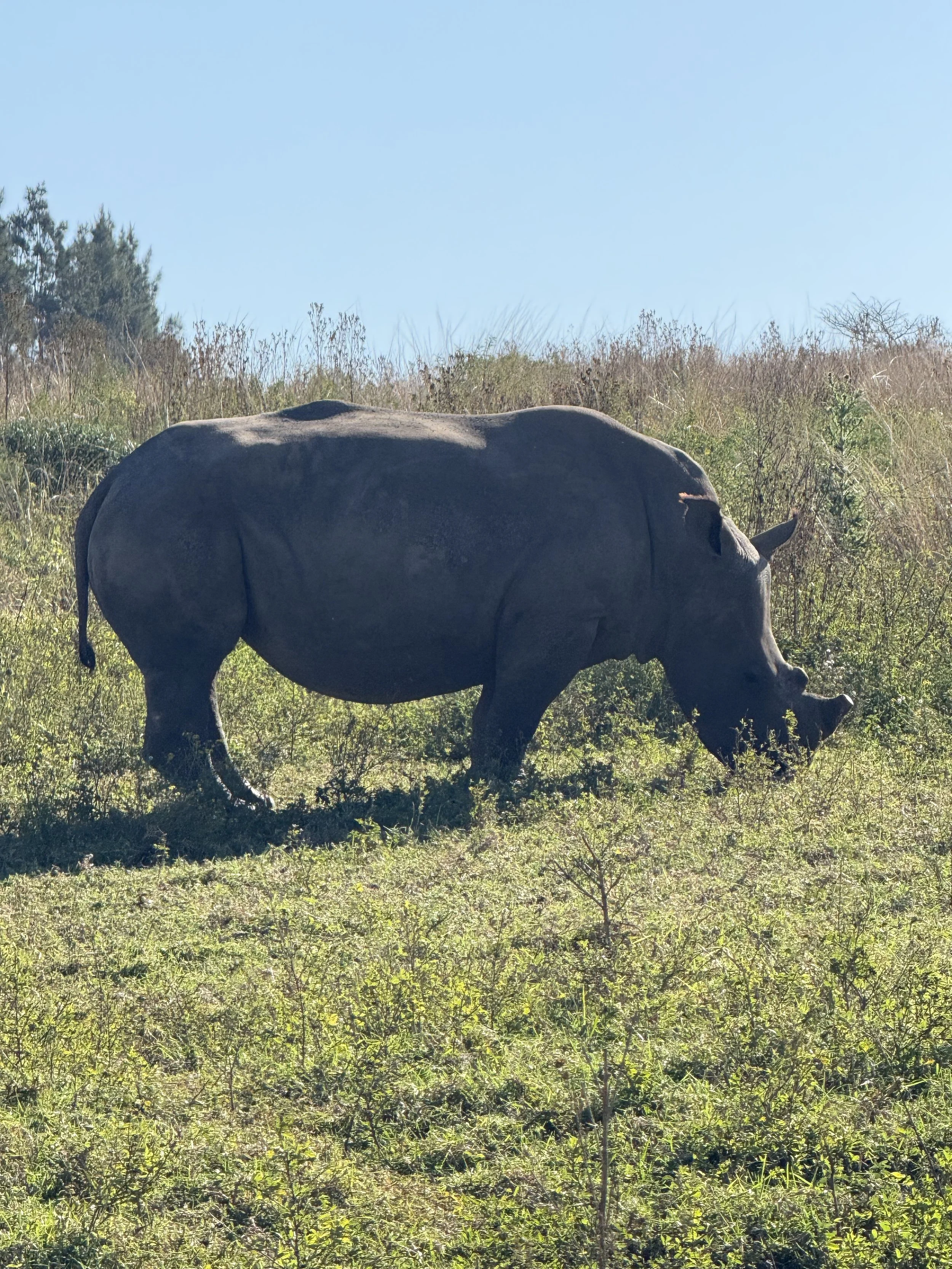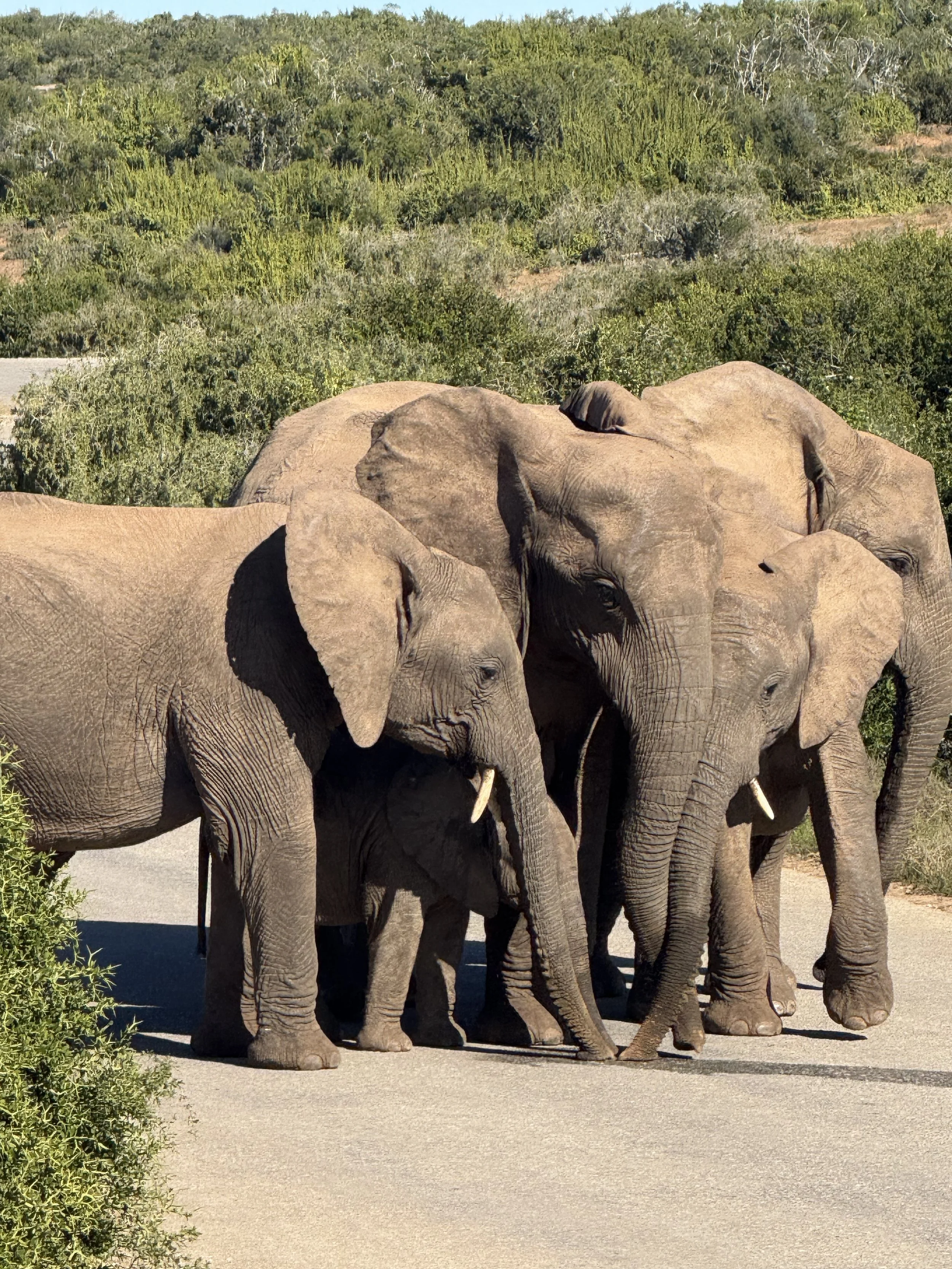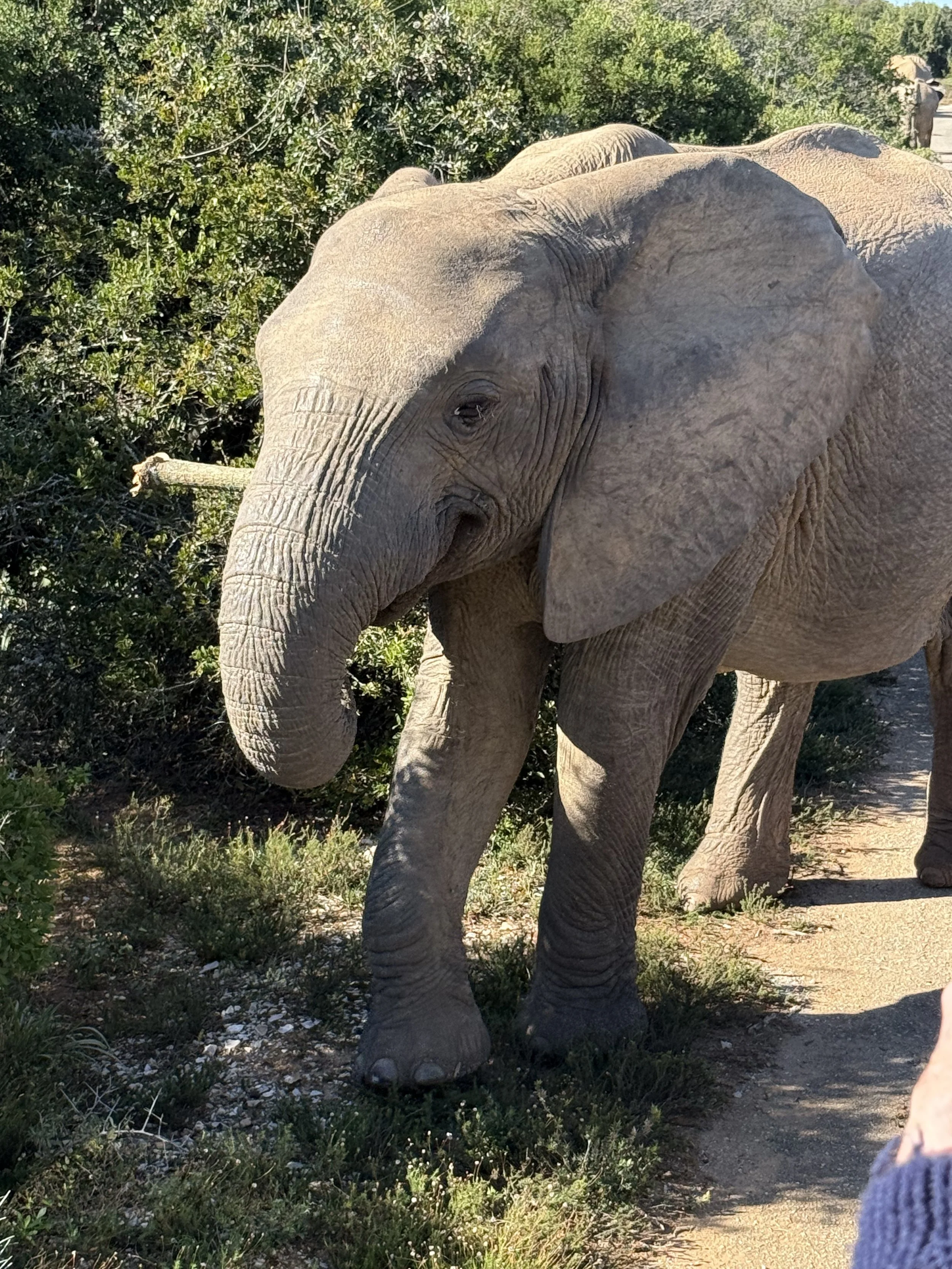Lions, Rhinos, and Wrinkly Giants: Our South African Game Drive Safari
We’ve been to a lot of places on this grand voyage — eaten street food in faraway markets, dodged scooters in crowded alleys, seen lemurs with eyeliner in Madagascar — but nothing got us more excited than our two-day animal-spotting bonanza in South Africa. Because let’s be real: who doesn’t want to live their own version of “The Lion King,” minus the traumatic stampede?
South Africa has long been a bucket-list destination for wildlife lovers, and with over 20 national parks and a complex history of conservation, it’s one of the best places on Earth to see iconic African animals in their natural habitat — not behind plexiglass or in a themed hotel lobby.
Private Reserves vs. National Parks: What's the Difference?
Before we dive into our game drive details, it’s worth understanding the two main types of safari experiences in South Africa: private reserves and national parks.
Private reserves like Tala are typically smaller, privately owned, and offer curated experiences with well-maintained roads, guides who know the animals by name (probably), and a good chance to get close to wildlife. They're often fenced to protect both animals and guests and may include luxury lodges, limited visitor numbers, and a more exclusive feel.
National parks, like Addo Elephant Park, are government-managed conservation areas that span huge regions and host a wider variety of species in truly wild environments. They're more rugged, less controlled, and often include self-drive options, making them feel a bit more like the animals are in charge — which, to be fair, they are.
Both play critical roles in conservation and tourism — private reserves often act as sanctuaries or buffer zones for endangered species, while national parks provide long-term ecological preservation on a large scale.
Day 1: Durban and the Drive to Tala Game Reserve
We docked in Durban, South Africa’s third-largest city and the busiest port in Africa. It’s a spicy cultural stew: Zulu heritage meets Indian cuisine meets British colonial architecture, with a healthy dash of rugby obsession thrown in. But we weren’t sticking around — we were heading out to Tala Game Reserve, about 45 minutes inland.
Once our oversized tourist coach lumbered its way into the countryside, we swapped out for open-sided 4x4s that looked ready for either safari or a Jurassic Park sequel. Within moments of entering the reserve, animals started showing up like they’d been tipped off we were coming.
First up: zebras and wildebeests just chilling on the roadside like suburban neighbors on lawn chairs. The zebras were elegant, the wildebeests were… less so. If zebras are the yoga moms of the savanna, wildebeests are the dads who forgot to take off their socks at the pool.
Then came the white rhinos, enormous and absolutely prehistoric-looking. Due to rampant poaching, Tala dehorns their rhinos as a protection measure — tragic but effective. It’s a stark reminder of the tough choices game reserves have to make to protect these animals.
But the highlight of the day? A tower (yes, that's the collective noun) of giraffes, including a baby! We watched in awe as nine giraffe heads peeked out over the trees like a group of curious periscopes. One even walked right past our vehicle, probably wondering what kind of weird zebras we were.
We rounded out the day with sightings of ostriches, kudus (antelope with horns that look like corkscrews made by a tipsy blacksmith), and hippos chilling in the water — suspiciously still. They reminded us of the Jungle Cruise ride at Disneyland, but with fewer animatronics and more genuine danger.
Then it was back to the gift shop (of course), where we picked up hand-carved giraffes for our butler and housekeeping staff. Giraffe karma secured.
Day 2: Port Elizabeth and the Elephant Encounter of a Lifetime
Next stop: Port Elizabeth — a city with a shiny new name (Gqeberha, if you’re feeling bold), part of the Eastern Cape Province and a gateway to Addo Elephant National Park.
Addo is a national treasure, originally founded in 1931 to protect 11 sad, nearly-extinct elephants. Today, thanks to decades of conservation, it’s home to over 600 elephants, as well as lions, buffalo, leopards, rhinos (aka the Big Five), and some rather ambitious warthogs.
We boarded another 4x4, ready for adventure. We didn’t have to wait long. Elephants started showing up like they were working in shifts. At first, just one or two crossed our path — close enough to reach out and touch, though we didn’t (because common sense). They’re graceful, powerful, and impressively wrinkly. Like yoga instructors who've been through some stuff.
One solo male was munching on acacia branches — giant three-inch thorns and all. We watched him tear into the tree like it was a salad bar. Apparently, elephant mouths are tougher than our rental car’s suspension system.
And then we hit the jackpot: a waterhole with at least 20 elephants, including babies! Some were bathing, some were mud-splashing, some were playing trunk tag — it was basically summer camp for pachyderms. They passed right by our vehicle, surrounding us like we were the world’s lamest safari influencers.
But wait — there’s more! On our way back, we came across two sleepy lions (brothers, we’re told) being reintroduced to the park. They’d just had a zebra-sized lunch and were sprawled in the sun with bellies so full they looked like they’d swallowed beanbags. No interest in us whatsoever — digestion was clearly the priority.
And just when we thought it couldn’t get any better, we encountered a herd of elephants crossing the road. Dozens of them. Moms, babies, and very serious-looking matriarchs. Our guide turned off the engine and we sat, hushed, as these majestic creatures revealed themselves from the bushes and crossed just inches from us. It was a moment of pure magic — the kind you don’t even try to capture on your phone because you’re too busy feeling it.
Reflections From the Back of a Bumpy Jeep
South Africa is a country of stunning contrasts — cosmopolitan cities, rural farmland, bustling townships, and protected wild spaces. Its history is complex, shaped by colonization, apartheid, and a still-ongoing process of reconciliation and transformation. Tourism plays a huge role in conservation and local economies, especially in areas surrounding game reserves and national parks.
These game drives were more than just animal bingo — they were windows into a world where humans and wildlife are still trying to find balance. And while we were only there for two short days, the experience left a deep impression.
We’re already talking about planning a proper safari — you know, the kind with khaki outfits and mosquito nets and early morning wake-up calls. This was just a taste (an amuse-bouche of the bush, if you will), but we’re hooked.
Also, we’ve officially retired from zoo trips. Nothing beats the real thing.

